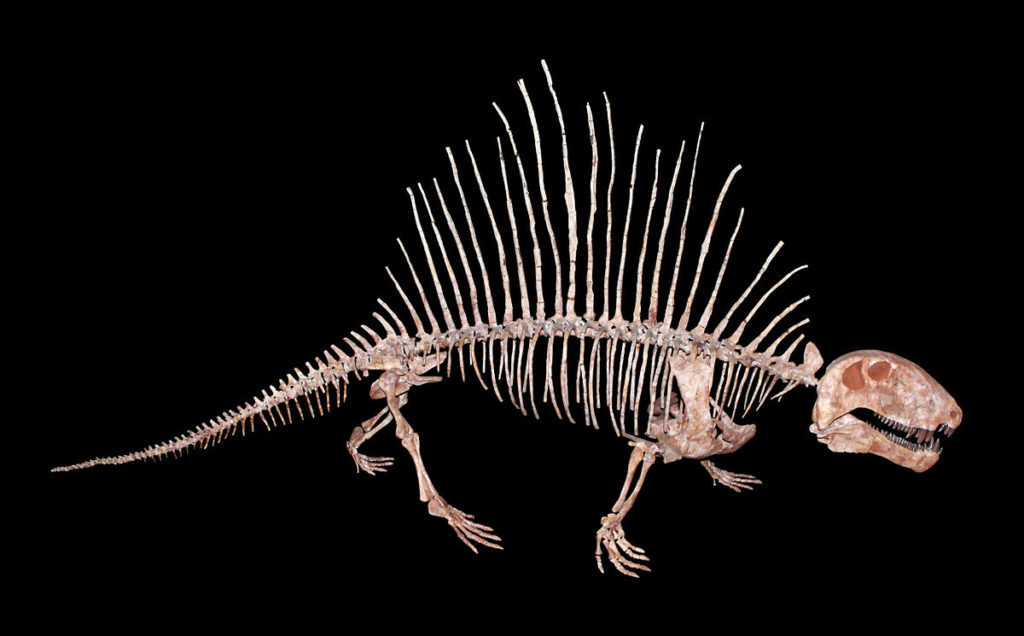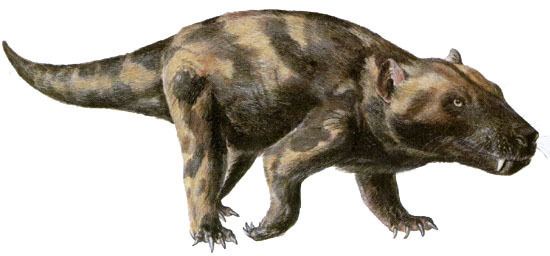By Adam D.A. Manning (@AdamManning)
The evolution of life is an endlessly fascinating subject to study. The richness of the ever-changing chronicle of living things is part of the beauty of nature and in recent decades a new approach to viewing the evolution of the terrestrial vertebrates (that is the reptiles, birds, and mammals) has emerged which challenges our conventional categories.
Reptiles, birds, and mammals have long been the three main groupings of backboned animals that fully live on (or above in the case of birds) the land. This is derived from our everyday observations of these animals as they are today, but the fossil record reveals a somewhat different tale.
The earliest reptiles evolved from their amphibian ancestors between 310 and 320 million years ago, in the late Carboniferous period. Shortly after the emergence of the reptiles (known as the sauropsids), a new group called the synapsids evolved from them, splitting the amphibians’ descendants in two.
For a while this divergence seemed to be favouring the synapsids. This is the group of animals that includes mammals (and therefore humans as well), but it also includes a varied assemblage of all sorts of other species. The earlier synapsids included the familiar Dimetrodon, which had a large “sail” on its back and was roughly four metres long. It was a top predator for its time, that being the early Permian period and animals like Dimetrodon later evolved into the therapsids.

Therapsids were a very diverse group of animals, such as Lystrosaurus from the early Triassic, which became one of the most successful vertebrate land animals of all time. Another remarkable species from the later Triassic was Lisowicia, one of the most massive animals of its time, comparable in size to an elephant. The ancestors of the mammals within the therapsids were in a group called the cynodonts, which included the fearsome wolf-sized predator Cynognathus, again from the Triassic.

Whilst the synapsids seemed the more dominant since diverging from their more reptilian ancestors, something was happening to challenge that dominance during the Triassic. The sauropsids were diversifying into all sorts of new types, including the dinosaurs and the crocodylomorphs, that is the crocodiles and all their ancestors. Crocodiles and the group they belong to have been an enormously successful family of animals, with an abundant range of all manner of different types, far more than those we are familiar with today. There were also numerous aquatic types within the sauropsids, such as the dolphin like ichthyosaurs, and flying and gliding species as well.
The catastrophic extinction event at the end of the Permian and the start of the Triassic is well known as causing the extinction of a significant majority of all species. There was another, albeit less cataclysmic, extinction event at the end of the Triassic and start of the Jurassic, roughly 200 million years ago. The Triassic-Jurassic extinction saw the demise of all the therapsids apart from the mammal-like cynodonts.
The Jurassic period and the Cretaceous that followed it saw the sauropsids in the ascendant, causing the Mesozoic to often be referred to as the Age of the Dinosaurs. Whilst the therapsids were limited to those cynodonts that had survived, they went onto evolve into a great many diverse species, including the true mammals and their ancestors.
Mesozoic mammals and their relatives are often thought of as small, unobtrusive shrew or mouse like animals, and many were. Yet here too, there was a surprising divergence of body types. These included tree-climbers, species that glided and animals that had a burrowing lifestyle, like moles. Another extraordinary Jurassic animal from this group was the beaver-like Castorocauda, which was adapted for living partially in the water, and had a pelt of fur. One of the largest Mesozoic mammals was the Cretaceous carnivore Repenomamus, and there is evidence that it ate dinosaurs.

For all this mammalian diversity, there is no doubt that the sauropsids dominated throughout the Jurassic and the Cretaceous. The mass extinction at the end of the Cretaceous that included all the non-avian dinosaurs was only a temporary setback as the birds, as descendants of the dinosaurs and part of the sauropsids, not only survived but went on to thrive.
Including the birds, there are today more species of sauropsids than synapsids. Whilst it is tempting to think of the time after the Mesozoic as an age of mammals, it is perhaps more valid to think of it as a continuation of the age of sauropsids, just as it has been for the last 200 million years or so. At a personal level, most of the wild animals most people will see are sauropsids, rather than synapsids. The reptiles and birds we see today are really part of the sauropsids, whilst the mammals, including us, are the only survivors of a much larger group, the synapsids.
The fossil record helps us to understand the story of life in all its richness and can often challenge preconceptions based on our snapshot of living things as they are today, showing us new relationships and connections and enhancing and deepening our appreciation and love of the natural world.

опубликовано здесь https://t.me/ozempik_kupit_moskva